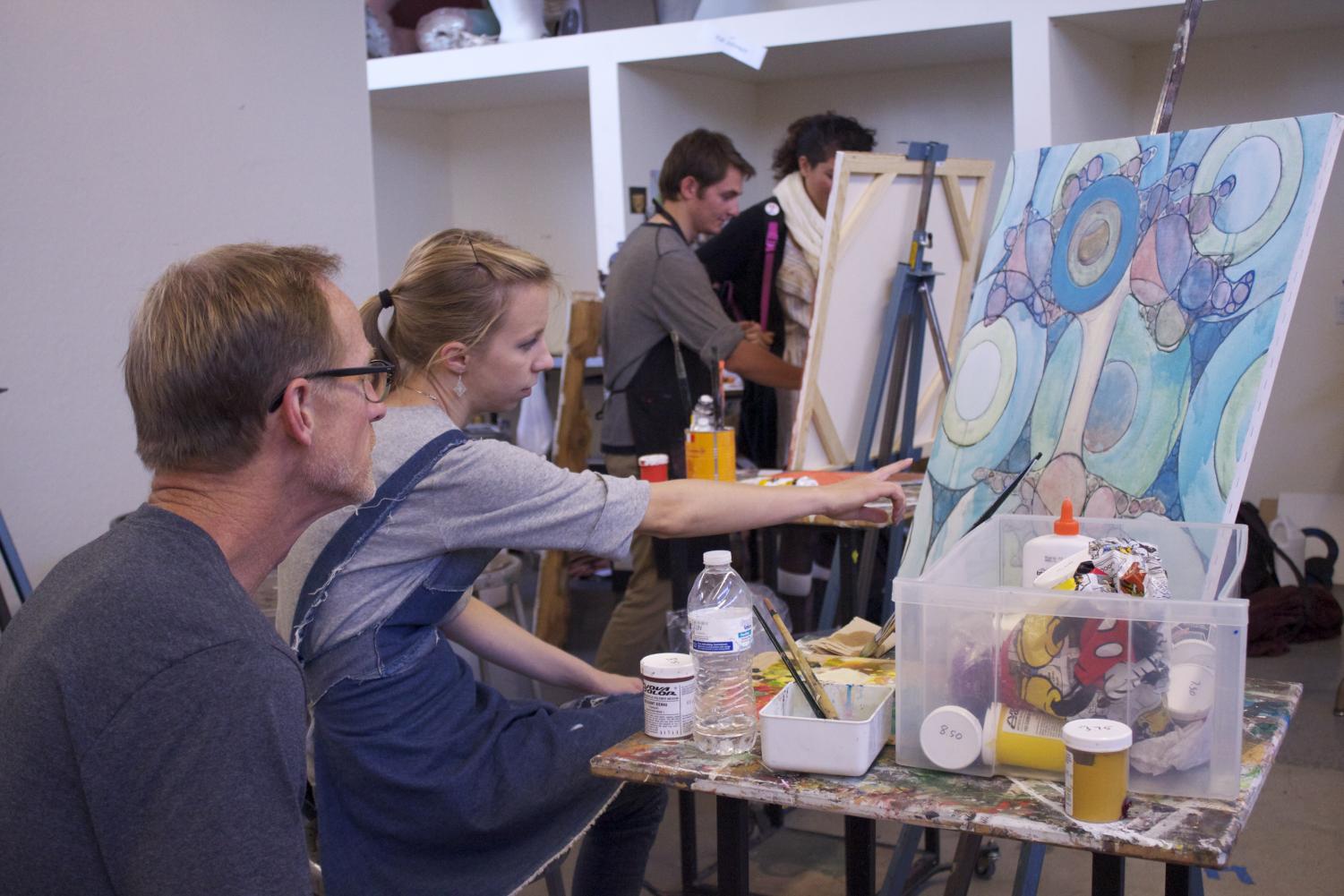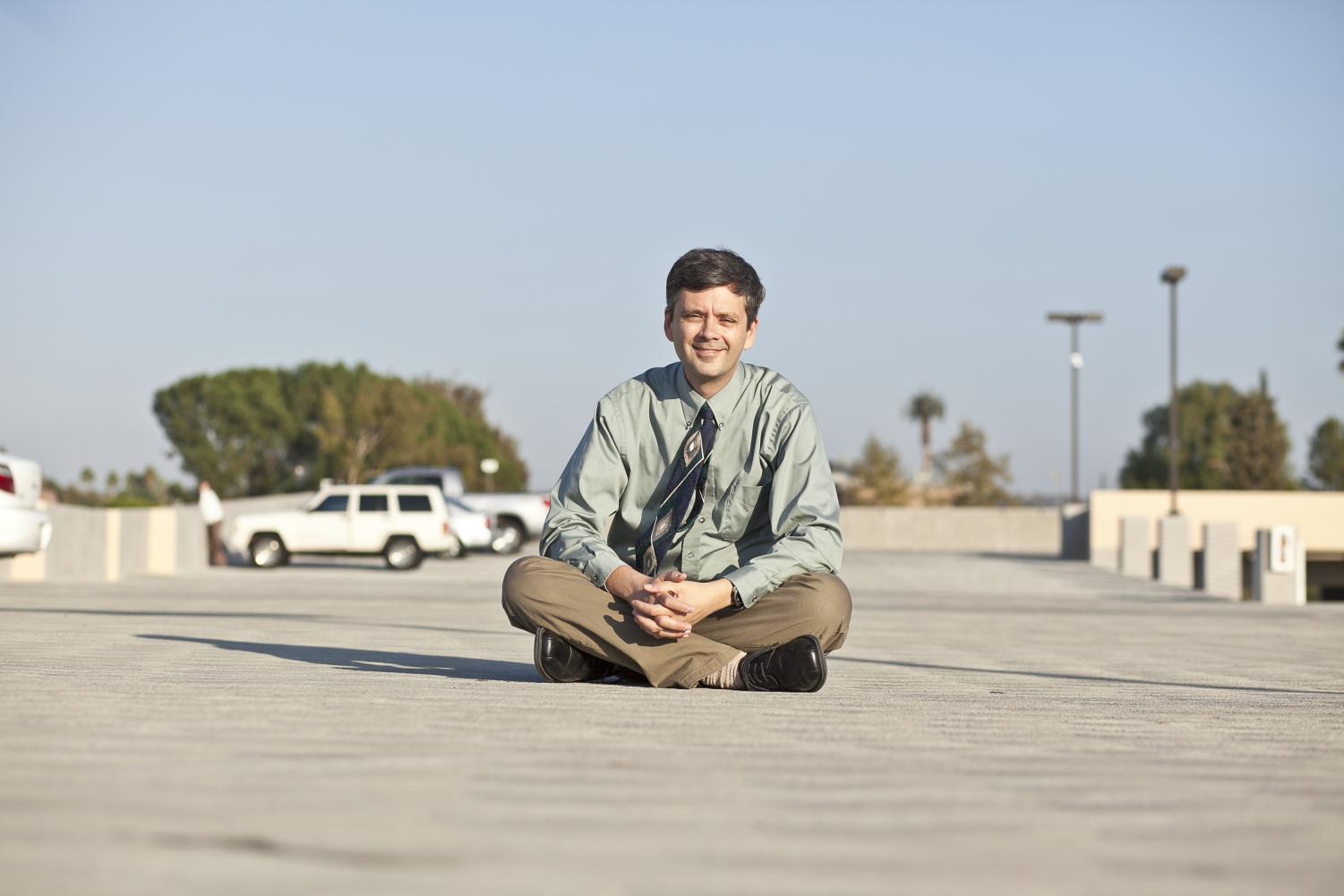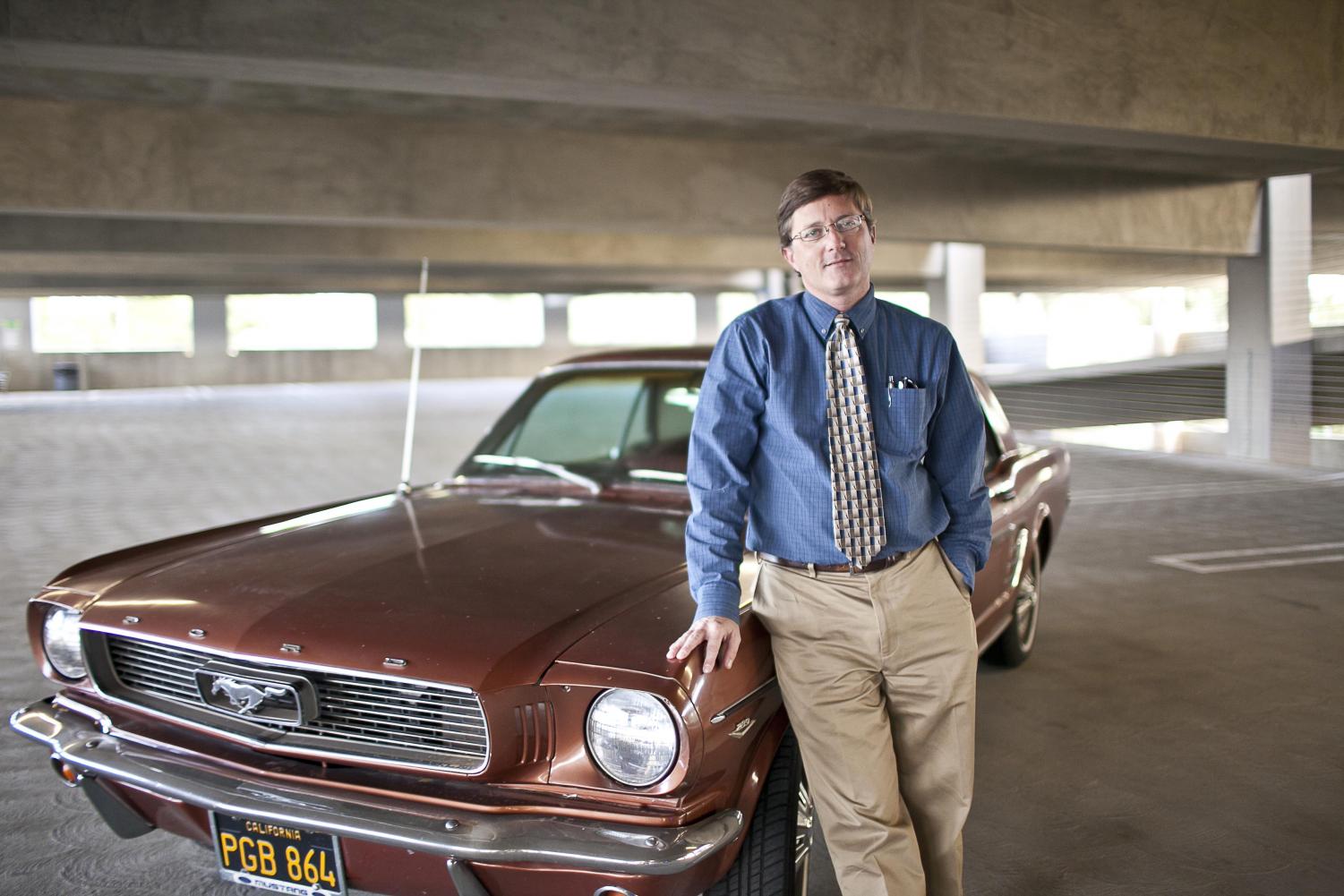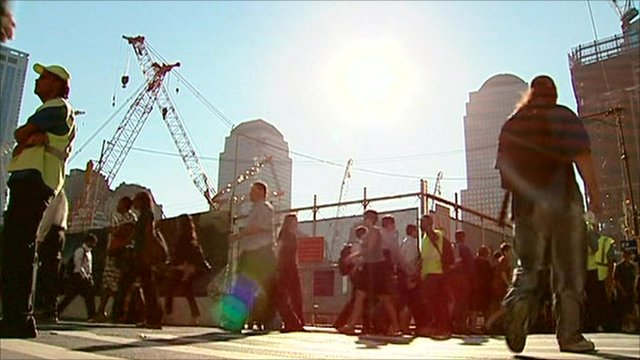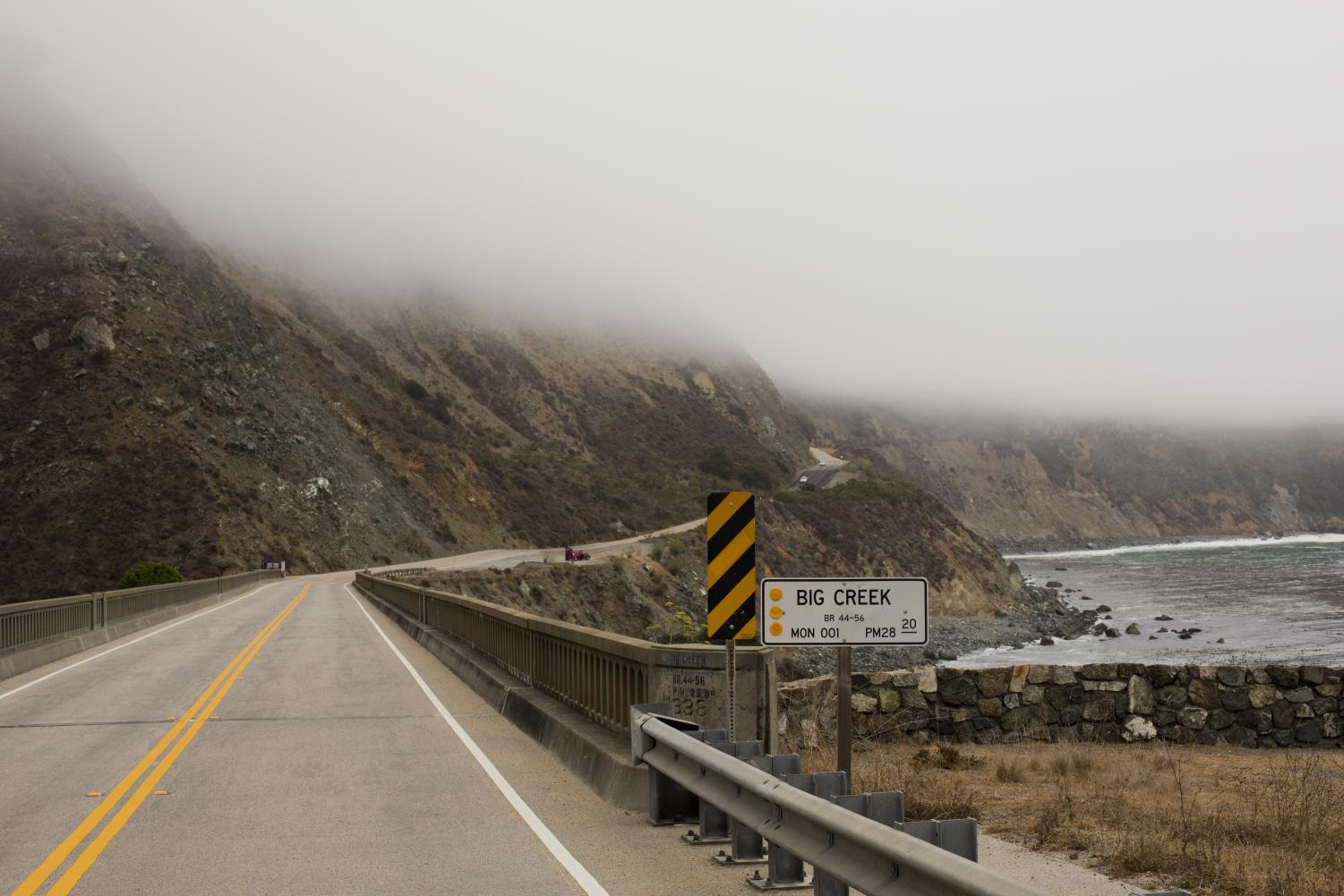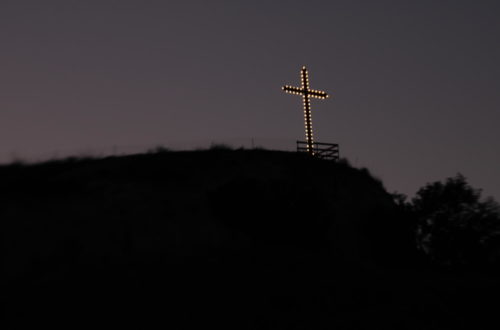Written by Candace Arce-Lindsay
The art world can often seem exclusive, reserved only for high-class galleries and museums. There are those, however, who have set out to give art a practical function among the poor, the homeless, the disadvantaged. These champions of culture use beauty and expression to inspire hope in the otherwise hopeless and downtrodden.
Alegria, founded in 2003 and operated by the Salvation Army, is one such organization that has adopted art as a means of redemption. Located on Sunset Boulevard, the institution houses 72 homeless families affected by HIV/AIDS and provides childcare, food services, professional medical facilities, job coaching, G.E.D. completion and spiritual care.
While the care offered by Alegria is extremely comprehensive, Paul Hebblethwaite, its former executive director, noticed in 2008 that the program had not provided aesthetic outlets for its residents. In response, he approached Dan Callis, professor of drawing and painting in Biola’s art department, to help him institute an art program at Alegria.
“[Hebblethwaite] realized that all the parts of the people were being served except for their aesthetic soul,” Callis says. “He has a deep belief that to be fully human one needs to speak to the aesthetic part of man as well as his physical needs, and he’s always pursued that.”
[The pair discussed ways in which the Biola art department, as well as other artists, could creatively collaborate at Alegria. According to Callis, Hebblethwaite then made space in the Alegria buildings for “a constant turnover of artwork for the 200-plus residents that walk through the halls every day.”
Hebblethwaite had created a way to blend the art community with Alegria’s diverse population. Because of its location, the Alegria gallery was an easy area for not only residents, but also members of the community to come see an art show featuring works by artists from the L.A. area. As a result, the gallery has helped bring aesthetic development to the residents of Alegria and raised the art community’s awareness of the program and its outreach.
“Seeing how the community gathers around the work in Alegria has been a breath of fresh air,” Callis says. “I have seen parent and child stop and engage the art work with one another, and their observation is such an incredibly refreshing, sincere engagement with the work that has been gifted to them.”
Just as the community of Alegria offers fresh insight to the art placed there, the art itself offers the residents of Alegria new insight into their own environment. “They’re not just surviving the streets of L.A.,” Callis says. “They’re now understanding it as a culturally rich landscape that is their home, which provides such a positive turning point in their personal identity.”
While Alegria is a strong example of how art can beneficially influence a community, there are multiple other mediums through which art can be used beneficially. Senior art majors Jason Leith and Christine Fuchs were able to experience the benefits of using art as outreach when they volunteered to work with the Watts House Project — a nonprofit, artist-run organization with a mission to redevelop and revitalize the neighborhoods in Watts through art.
Last semester, Fuchs and Leith volunteered to give inner city kids art lessons through the program, which was a growing experience for both of them. “As an artist, to share the subject that you love with kids who don’t appreciate it and often resist getting involved can be really frustrating,” Leith says.
As time went on, however, he began to see change in the children he worked with. “[They] became much more open the more we worked with them, and seeing someone finished spurred others on to work harder on their own projects,” he explains. “Once they completed a project, they were able to feel a sense of pride and ownership in something they had created themselves. That’s not an experience they get to have very often.”
Fuchs related how she and Leith were able to communicate with one adolescent girl through a mosaic project. Frustrated with the project in general, the girl had refused to participate. She revealed that her mother had treated pictures she’d drawn at home with either apathy or outright contempt. But by participating in the mosaic project, she was able to feel love and encouragement through the affirmation Fuchs and Leith showed for her work.
Throughout their time as volunteers, Leith and Fuchs came to realize the importance of their artistic investment. The children discovered a creative outlet that helped cultivate their self-worth, identity and work ethic; Leith and Fuchs were challenged to develop their patience and love by setting aside their frustrations to reaching the children through art. In such a context, art shows that its worth extends beyond just aesthetics. It provides a platform on which community and relationship can be built, a gateway through which broken minds and hurting hearts can be healed.
In addition to volunteering in Watts, Leith and Fuchs also worked in conjunction with other Biola art students to coordinate a show for Alegria this past summer. “It was a real challenge to put together the show,” says Leith. “We had to construct a collection whose content was at once relevant to the art world and the community of Alegria.”
Fuchs and Leith, who curated the show, worked to establish a theme and a body of work that they felt would have a powerful effect. The show, titled “Left, Breathless” consisted of work by Biola art students whom Leith and Fuchs commissioned. At first, the two had concerns about the pieces being produced for the show. “We recognized pervading themes of pain, suffering, doubt, and solitude, and we wondered whether it would be too heavy to be enjoyed,” Fuchs explains. “We were worried that, since the people who live there are constantly surrounded by sickness, pain and despair, they might find our offering offensive.”
Yet as residents were introduced to the work while it was being installed, they began to connect to the pieces in a way that Leith and Fuchs did not expect. The community of Alegria resonated with the work, relating to what it expressed. The show opened up rich possibilities of sympathetic relationship between the Alegria and Biola art communities — relationships which will hopefully continue to develop through the efforts of students like Leith and Fuchs.
Programs like Alegria and the Watts House Project exemplify the growing wealth of opportunities for art to serve communities in constructive ways. Art is no longer a luxury reserved for passive appreciation at LACMA or the Getty. It is now, more than ever, becoming a means of providing its viewers with a new perspective, a stronger identity and a creative outlet they may not have had otherwise. Because art speaks to universal human experience, it can provide a space for hope, healing and growth.
After successfully establishing Alegria’s art gallery, Paul Hebblethwaite has moved on to the East Coast. He plans start up similar programs at shelters in major cities such as New York and Chicago. These programs, he hopes, will not only feature artwork, but also invite shelter residents to participate in their own art creation.
To learn more about Hebblethwaite’s Art and Shelter campaign, visit www.artandshelter.org
